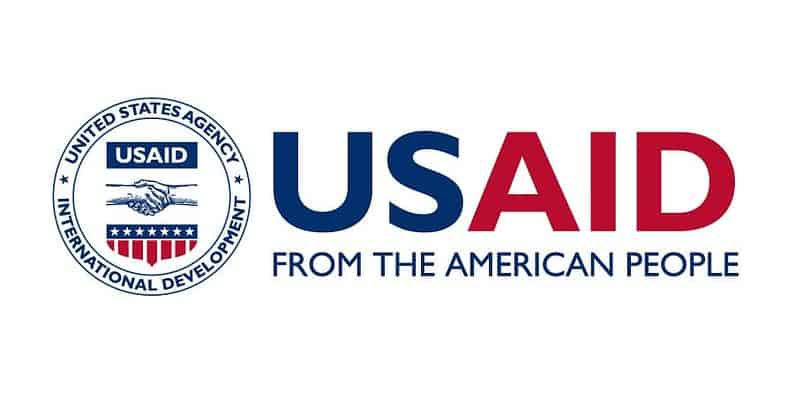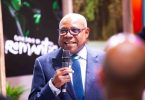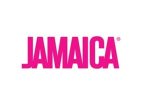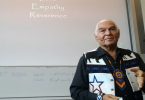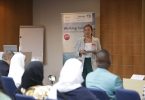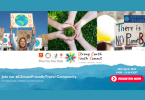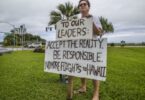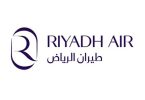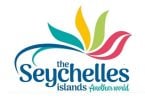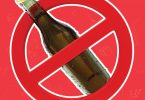MR. CAPEHART: E hoʻomaka kākou i ke kiʻi nui. Pehea a pehea e hoʻopilikia ʻia ai nā wahine i ka hoʻololi ʻana i ke aniau?
KA MANA LUNA: ʻAe, mua, e hoʻomaikaʻi aku au iā ʻoukou e kau nei i kēia hanana.
A e ʻōlelo wale ʻoe ʻo kaʻu UNGA 10 kēia - ʻaʻole, koʻu UNGA 11 a ʻo kēia ka manawa mua aʻu i hele ai i kahi hanana e like me kēia, ʻo ia wale nō ka lawe ʻana i ke poʻo i kahi kumu nui o nā pilikia he nui a me kahi mea nui e pono ai i nā ʻōlelo o nā hoʻonā. .
No laila ke ʻōlelo mua nei au, ʻo nā wahine, e like me nā poʻe marginalized āpau, ʻo ka poʻe nāwaliwali a pau i hoʻopilikia ʻia e ka hoʻololi ʻana i ke aniau. ʻIke pinepine mākou i nā kaiāulu liʻiliʻi ma kēia ʻāina. ʻIke mākou iā ia a puni ka honua e pāʻani ana.
Inā ʻoe e nānā i ka nui o ka poino maoli a i ʻole ka nui o ka make ma nā ulia pōpilikia maoli, ʻike ʻoe i nā wahine a me nā keiki e lawe ana i ka pōʻino. A noʻonoʻo paha ʻoe, ʻeā, he ʻokoʻa koʻikoʻi kēlā a ʻaʻole hiki iā lākou ke holo ma mua o nā nalu a i ʻole.
Akā he mea nui e pili ana i nā maʻamau o ke kāne a ʻo ia, me ka manaʻo e pono ʻoe i ka ʻae i ʻike inā hiki iā ʻoe ke haʻalele a paʻa i nā home. Ma ka laulā, ʻo ia wale nō ke kuleana no ka nui o ka pono o ka ʻohana. A ʻaʻole hoʻi i kahi kūlana, e kau hou i ka pono ponoʻī.
ʻIke ʻoe i kēlā lā i kēia lā, nā nāwaliwali, i ka maloʻo ʻana o ka wai, a ua hele au i nā wahi he nui - maopopo iaʻu he nui ka poʻe o ʻoukou - kahi i paʻa loa i kēlā me kēia makahiki, pehea. ʻokoʻa nā ʻāina mai nā makahiki he ʻumi i hala. Akā hoʻokahi mea ʻaʻole i loli nui, ʻo ia ka mea maʻamau ka hele ʻana o nā wahine i ka ʻohi wai ma nā kaiāulu kuaʻāina, no laila, i ka maloʻo ʻana o ka wai ma kahi kokoke i ke kaiāulu, pono nā wahine e hele wāwae a ʻoi aku.
A ʻo ia ke ala weliweli e hoʻokau mau ʻia ai nā wahine i ka hana ʻino ma ke ala. No laila, ʻoi aku ka liʻiliʻi o kou pale ʻana, ʻoi aku ka nui o kēlā mau loina ʻē aʻe i ʻike ʻole ʻia ma ko lākou mau maka e pili ana i ka hoʻololi ʻana i ke aniau - he ʻano maʻamau e hōʻike ana he maikaʻi ke hoʻouka a hoʻouka paha i kahi wahine. - a laila ʻokoʻa kēlā ʻano maʻamau a no laila ke ʻano o ka hopena ʻokoʻa i nā wahine ma ia ʻāpana pū kekahi.
MR. CAPEHART: No laila, ma hea o ka honua e paʻakikī loa ai kēia mau pilikia?
KA MANA LUNA: ʻAe, paʻakikī ke koho. E hāʻawi aku wau iā ʻoe i kahi mākaʻikaʻi pōkole o koʻu ʻaoʻao hope loa, a i ʻole nā mea ʻē aʻe o ka ʻaoʻao hope o kahi pae.
I ka makahiki i hala aku nei, ua huakaʻi au i Pakistan i ka wā i noho ai ka hapakolu o ka ʻāina ma lalo o ka wai ma muli o ka hui pū ʻana o ka ua i ʻike ʻole ʻia a me ka hoʻoheheʻe ʻana i nā glaciers - e hoʻoheheʻe ʻia i ka manawa hoʻokahi - a me ka hoʻomākaukau ʻole ʻana a me nā ʻōnaehana. A eia hou, ʻo ia ka wahine pinepine, ka mea hope loa e noho no ka mālama ʻana i ka waiwai, e mālama i nā holoholona i ka hele ʻana o nā kāne e ʻimi i ke kōkua. ʻO koʻu manaʻo, ua hoʻopilikia ʻia nā mea a pau ma nā ʻano weliweli.
E hele ana mai laila mai i ka ʻākau o Kenya a i Somalia e ʻike i ʻelima mau kau ua hāʻule pololei. No laila ke kū'ē loa i ka mea aʻu i ʻike ai ma Pakistan, ʻo ia ka ʻāina maloʻo. He mau miliona holoholona i make i ka maloo ma ka Horn of Africa. E noʻonoʻo paha ʻoe, ʻo ka hopena nui ma luna o ka poʻe kahu hānai, ʻo ia hoʻi, ka poʻe hanai holoholona.
A ʻoiaʻiʻo, ua ʻike maoli ʻoe i ka piʻi nui ʻana o ka pepehi kanaka ʻana i kēia mau kāne, no ka mea, ua hanai holoholona lākou, no nā makahiki he nui, a hiki koke i ka pau ʻana o kā lākou mau pūʻulu kao a me nā kāmelo e like me ia.
Akā i ka wā e pili ana i ka mālama ʻana i nā hopena ma luna o nā ʻohana a me ka pōʻino koʻikoʻi koʻikoʻi i waiho ʻia i ka poʻe ʻōpio, ʻo ia hoʻi nā keiki ma lalo o ʻelima, ʻo nā wahine ka mea e hana pū me nā kāne kaumaha, e hoʻoponopono i ka nīnau o ka hopena o nā keiki kāne i loaʻa. Ua noʻonoʻo ʻo ia i ka hoʻomau ʻana o ka nohona a i kēia manawa ke noʻonoʻo nei, "Pehea wau e hāʻawi ai iā lākou i kahi ola ʻē aʻe, kahi ʻoihana ʻē aʻe," akā aia nō hoʻi i kahi kūlana e hoʻāʻo e ʻimi i ka meaʻai no ka muli loa.
No laila, ʻo kaʻu ʻōlelo hou, paʻa ia ma nā wahi like ʻole. ʻO wau wale nō, ʻo ka mea hope loa aʻu e hāʻawi aku nei iā ʻoe, aia wau i Fiji.
A ʻoiaʻiʻo, no nā mokupuni Pākīpika a pau - ʻaneʻane lākou a pau - he mea hoʻoweliweli maoli.
E pili ana i nā lāhui holoʻokoʻa e noʻonoʻo i kekahi mau makahiki ma mua o kahi e neʻe ai lākou, i ka mea a lākou e hana ai, e like me, inā hiki iā lākou ke noho ma nā wahi o ka ʻāina, ma nā mokupuni, kahi haʻahaʻa haʻahaʻa.
A he mau hiʻohiʻona liʻiliʻi wale nō me, kahi o nā wahine i waho, e ulu ana i ka ʻoihana.
I kēia manawa, ua hālāwai wau me kahi wahine me kahi hui wahine e ulu ana i nā hua waina kai - ʻo ia hoʻi, he mea ʻono.
ʻAʻole au i loaʻa i nā hua waina ma mua. A haʻaheo loa lākou i kā lākou mau hua waina. A, ke hoʻāʻo nei ʻo USAID e kākoʻo iā lākou, e kiʻi i kahi microloan i hiki iā lākou ke kūkulu i kā lākou ʻoihana, hoʻonui i kā lākou ʻoihana.
Akā ʻo ka manawa wale nō, a ma laila kahi e piʻi mai ai ka loli i kēlā me kēia manawa.
Wahi a lākou, ʻo ka pilikia wale nō i kēia mau lā, ʻo ia ka lawe ʻana i ko mākou mau waʻa i waho a i waho, no ka mea, i ka wā e mahana ana ke kai, ua pumehana ʻo ia ma kahi kokoke i kahakai, no laila pono mākou e hele i mua. No laila ke hele nei mākou e kiʻi i kā mākou mau hua waina, ʻo ia hoʻi, ʻoi aku ka lōʻihi mai nā kuleana ʻē aʻe a mākou e loaʻa ai i nā wahine i loko o ka hale.
Eia kekahi, hoʻohana mākou i nā moku i hoʻohana ʻia i ka wahie, no laila ke hoʻopuka nei mākou i nā mea hoʻoheheʻe hou aku i ka lewa i ko mākou hele ʻana a hoʻāʻo e kiʻi i kēia mau hua waina i mea e ulu ai kā mākou ʻoihana.
No laila, ʻike hou ʻoe, ma nā wahi a pau āu e nānā ai, nā mokupuni o ka Pākīpika, ʻApelika, ʻAsia – he mau kaiaulu walloping.
MR. CAPEHART: Makemake wau e kiʻi i kāu mau microloan i ʻōlelo ʻia, makemake wau e kiʻi i ke kōkua a USAID e hāʻawi ai. Akā, ʻo kēia mau pilikia āu e kamaʻilio nei, ʻo ia ka nui o ka honua ulu, akā ʻo ka mea a mākou e kamaʻilio nei e pili ana i ka honua ulu?
KA MANA LUNA: ʻAʻole, paʻakikī, akā hiki wale iaʻu -
MR. CAPEHART: Kāhea ʻia kēlā nīnau alakaʻi.
KA MANA LUNA: Ke ola nei mākou, ʻo koʻu manaʻo - ke manaʻo nei mākou i kā mākou pōʻino kūlohelohe he iwakāluakūmākolu ma ʻaneʻi i ʻoi aku ka nui o hoʻokahi piliona kālā ma US i kēia manawa.
Ua ʻike mākou i ko mākou lā wela loa, pule, a me ka mahina ma ka moʻolelo, manaʻo wau i nā mahina ʻelua i hala iho nei. No ka manawa mua loa mākou e pani i kekahi mau ʻoihana, a me nā kahua hoʻomoana o ke kauwela, a me nā manawa kūpono no ka poʻe ʻōpio ma muli o ka uahi ahi e ulu ana i loko o ko mākou ola.
A eia hou, nā hopena like ʻole. He laʻana liʻiliʻi paha kēia, akā inā ʻaʻole hiki i kahi keiki ke hele i kahi hoʻomoana, ʻo ia ka makuahine hana - ma ka hapa nui o nā hale, ʻoiaʻiʻo naʻu - pono ia e noʻonoʻo i ka mea - ua like ia me kahi ʻano o ka mea i hana. me COVID.
Ke pā mai ke aniau, inā ma nā ʻano liʻiliʻi a pōkole paha e loaʻa ai nā hopena olakino koʻikoʻi a me nā hopena koʻikoʻi o ka nohona, e hāʻule ana ia i nā multitaskers o ka home e mālama i kēlā.
Akā, ʻo koʻu manaʻo, ʻaʻole hiki ke hoʻonui ʻia nā hopena kālā o ka pōʻino i kēia manawa ma kahi kokoke i kēlā me kēia lā i kekahi mau wahi o ʻAmelika.
ʻAʻole ia ka mea a USAID e hana ai no ka mea ke hana nei mākou i kā mākou hana ma waho.
A ʻo kā mākou hana, e ʻōlelo wau ʻo kekahi o nā pilikia nui a me nā pilikia a mākou e hoʻopiʻi nei, ua hāʻawi ʻia mākou i nā kumuwaiwai paʻa a me nā kumuwaiwai i mālama ʻole ʻia me nā pilikia hoʻomohala e hoʻololi ʻia ai ke aniau.
ʻOiai ke ulu nei lākou, ke ulu nei kā mākou waiwai. Akā ʻaʻole hiki iā ʻoe ke hoʻomau. Akā ʻo ka pilikia ʻē aʻe ʻaʻole ia wale nō. ʻO ka nui o kā mākou waiwai e hele i ka mālama ʻana i ka poʻe i nā kūlana ulia pōpilikia e like me nā mea ma Libya i ka pule i hala aku nei - a i ʻole nā mea aʻu i ʻōlelo ai ma Pakistan a i Somalia.
A ʻo ka mea āu e hana ʻole ai, ʻo ia ka lawe ʻana i kēlā mau kōkua kōkua kanaka a hoʻolilo iā ia ma kahi o nā ʻoihana kūʻē i ka pōʻino a i ʻole i nā hua kūʻokoʻa maloʻo a i loko o kēlā mau microloans i nā mea mahiʻai liʻiliʻi i hiki ke hoʻohana i kā lākou mau smartphones e kali i nā hanana ʻino a me ka wā. ma ka liʻiliʻi e hoʻēmi i ke ʻano o ia mau poho.
No laila - ʻo kaʻu i wehewehe ai ʻo ia ke ʻano o ka ʻokoʻa ma waena o ke kūpaʻa a me ke kōkua pilikia. A ua paona nui mākou ma ke ʻano he aupuni a ma ke ʻano he kaiāulu hāʻawi i kākau nui iā - ʻo wau, he mea nani, he kuleana nani ke hoʻāʻo e kōkua i ka poʻe e hele i nā manawa pōʻino loa o ko lākou ola.
Akā i ka hana ʻana i kēlā ala, he mea hoʻomaha loa ia, ʻike ʻoe e hoʻi hou ana ʻoe. A he mea ʻeha loa kēlā.
No ka mea i ʻōlelo mua ʻia, e ʻōlelo mākou he haʻalulu, akā i kēia manawa ua ʻano like ia, he haʻalulu inā he hiʻohiʻona wānana o kahi ʻāpana o ke ola mahiʻai o ka ʻāina? A he aha ka mea e koi ai iā mākou?
Inā ʻoi aku ka nui o ka pai, e hoʻonui nui mākou i kā mākou hoʻopukapuka ʻana i ke kūpaʻa, ʻo ia kā mākou e hana ai. He paʻakikī ka mālama ʻole ʻana i nā ola no ka hoʻopakele ola ʻana i ka wā lōʻihi. No laila ke kaupaona nei mākou i kēia e like me ka mea hiki iā mākou. Akā ʻaʻole ia he hana kaulike leʻaleʻa.
MR. CAPEHART: Ua manaʻo ʻoe i ka nīnau aʻu e nīnau ai, e lele ana mai ka ʻāpana micro-loans, no laila e lele wau i mua. E kamaʻilio kākou e pili ana i ka pilina ma waena o ka hoʻomohala waiwai a me ka hoʻololi ʻana i ke aniau.
Pehea ka pili pili ʻana o kēia mau pilikia a pehea ka ʻōlelo ʻana o USAID iā lāua ʻelua i ka manawa like?
KA MANA LUNA: ʻAe, ʻo wau, ʻōlelo wau aia mākou i loko a i ʻole ke neʻe nei mākou i mua, e ʻōlelo wau no ka mea he lōʻihi kā mākou e hele ai e hoʻokomo i ka nānā ʻana i ka hoʻololi ʻana i ke aniau ma ke ʻano he hiʻohiʻona hoʻolālā o kā mākou hana āpau.
No laila, ʻo kekahi ʻano o ka hoʻolālā ʻana, ʻo ia ka mea i lawe i kā mākou Food Security and Resilience Bureau a hoʻohui pū me kā mākou hui aniau. A ma laila - akā ʻo ka nexus i ʻike maopopo ʻia e ka poʻe ʻaʻole ia he uhi piha, akā he nui - ʻo ka mahiʻai ke kumu nui o ka hoʻokuʻu ʻana, no laila pono e iho i lalo.
A ʻo ka ʻoiaʻiʻo, ʻo ka mahiʻai akamai ke ʻano e mālama ai i ka palekana meaʻai a hoʻonui paha i nā makahiki e hiki mai ana. No laila hoʻokahi hui ʻana. Akā ma ke ʻano o ka hoʻonaʻauao, ʻo ia ka helu ʻekahi. ʻO koʻu manaʻo, ʻo kākou a pau, ʻo kēlā me kēia o kākou he mau keiki, ʻo ia ka helu ʻekahi mea a nā keiki e makemake ai e ʻike e pili ana iā mākou, ʻaʻole wale ka mea e hiki mai ana i ka honua aʻu i ʻike ai, akā he aha kaʻu e hana ai no ia mea?
No laila ʻo ka noʻonoʻo ʻana e pili ana i ka hoʻonaʻauao ʻana i ka hoʻokele aupuni - he mea paʻakikī loa ia no nā aupuni hiki ʻole ke hoʻomau i ka hoʻololi ʻana i ke aniau, inā ma ka ʻaoʻao kūpaʻa a i ʻole ma ka ʻaoʻao pilikia, no ka mea, hoʻohui ia i kēia nalowale o ka hilinaʻi i nā ʻoihana a mākou e ʻike nei. nā wahi he nui o ka honua.
ʻAʻole wale ia e pili ana i ka hoʻokuʻu ʻia ʻana o nā ʻenehana nānā, ʻike ʻoe, mai ka PRC a i ʻole nā democracies e hoʻouka ʻia e nā ʻano ʻē aʻe.
Aia kekahi mau mea e hana nei ma ka honua i hiki ʻole i ke aupuni ke hoʻomau, hoʻohui ia i ka manaʻo ʻino e pili ana i nā ʻoihana. No laila he ala lōʻihi kēia o ka ʻōlelo ʻana he hana hoʻomalu mākou ma USAID, hana mākou i ka hoʻonaʻauao, hana mākou i ke olakino lehulehu e pili pono ana i ke aniau.
Ke nānā nei ʻoe i ka hoʻololi ʻana i nā ʻano maʻi malaria, manaʻo wau, ke wānana nei ʻo WHO he 250,000 mau kānaka e make i ka makahiki 2030 e pili ana i ke aniau - inā he wela a me ka malaria a i ʻole ka nele o ka wai, ka ʻai ʻole e ulu mai ai.
No laila kahi e pono ai mākou e loaʻa ma ke ʻano he ʻoihana e hoʻokomo i ka manaʻo i ke kūpaʻa a me ka nānā ʻana i ka hoʻololi ʻana i ke aniau a me ke ʻano o ke kaiāulu i nā mea āpau a mākou e hana ai.
In a sense, USAID is a climate agency, even if we still have a climate team that works as a climate team per se, mainstreaming this agenda is what our missions are trying to do all around the world.
And this is not because I anticipate the, you know, the concerns of some maybe in our domestic politics on this – and I’m sure you’ll get there, but this isn’t USAID foisting anything.
This is the cri de coeur for you know, heard all around the world, that this is a game changer. Our development trajectories were going here – COVID hit and now we have what could feel like a COVID-like, not not of the same scale, but battering again and again and again.
So just as we’re now thinking differently about pandemic prevention, what should that lead us to think about when it comes to embedding climate in the mindset of all public spending and all notions of mobilizing, mobilizing private capital, because that’s, of course, going to be a big part of the solution.
So we’re that’s – it’s this mainstreaming and not having climate live over here. But given that it is this game changer and given it’s our host countries and the communities in which we work and of it works. It’s John F. Kennedy’s pleading gives us more of the tools to adapt to this shell-shocking phenomenon.
MR. CAPEHART: Well, I asked the question about economic development because, with economic development comes perhaps better lives, and better living conditions, which then can exacerbate the issues related to climate change.
So how do you – and I wrote it down really fast – that mainstreaming, how in mainstreaming climate in the things that you do. How do you find that balance between helping people help themselves, while at the same time not doing it in a way that exacerbates the climate problems that we all have to face?
KA MANA LUNA: Yeah, and I mean, I think one example I think that you’re alluding to is, you know, as people get richer, they buy more meat and that causes, you know, more emissions or they travel more, they’re flying more there.
And absolutely, I mean, we’ve seen that the emissions trajectory in both the PRC and India reflected that.
Our emissions trajectory, back as we were bringing our economy online and modernizing, absolutely reflects that. So I think that is profound. I will say the fact that solar power, the cost of solar has come down by 85 percent. The cost of wind is down by 55 percent. Where we work, the demand signal for renewables is very, very significant – which doesn’t get it mediating some of the other features of getting wealthier.
But it does get to the urgency of making clean energy transitions as these prices come down. It is a better bet. And so again, when we have these exchanges on the Hill and it looks to some who are skeptical somehow still of climate programming, you know, that we’re bringing our green agenda to the countries in the communities we’re working in – no, it’s not like that at all.
They’re saying we can’t afford this other thing.
But actually, we can pop up a solar panel and have a water pump that we’ve been trying to get in this village. We can go off the grid in ways we never – where the state is not going to get here any time soon.
This was my experience out in Bekaa Valley in Lebanon, where USAID had worked to, you know, build a bunch of solar panels that powered electricity and ended up actually reducing tension between refugees who were being generously sheltered by Lebanese host communities, Syrian refugees, and the Lebanese.
Because they were no longer fighting over water because they had water because they had solar – but to attach to the grid, no way. And so then those tensions, who knows what would happen with that.
So the idea is that these investments are cost-effective over time, that actually you can develop, along the lines of what you’re describing, in a clean way.
I think the other aspects of consumption need to be dealt with as part of civic education and as part of norm work because it is true that in many, many societies, and again, including our own back in the day, as you increase your livelihoods, your income, consumables are a very attractive way to expand those new resources.
This feels like a high-class problem in most of the countries we’re talking about. I mean, I’m talking about working with small-scale farmers who are paying double this year for fertilizer than they were paying before Putin invaded Ukraine, who just need a little loan to be able to get access to some of those drought-resistant seeds that are going to increase yields by 25 percent.
But again, finding the resources to get them that. Getting the private sector interested in adaptation. But the question that we should be thinking now about, if we can be successful, if we can help them withstand the negative effects of climate change and the like here in America, grow jobs out of also these changes to their economies, then what?
Then we will be grappling with the kinds of things that have further fueled emissions in more recently developed countries.
MR. CAPEHART: As you alluded to many times, there’s a lot of good news related to the development of clean energy alternatives. That being said, though, global emissions once again hit a record high in 2022, and carbon dioxide in the atmosphere has risen to levels not seen in millions of years. Are we moving in the wrong direction despite glimmers of hope?
KA MANA LUNA: Well, I mean, I think all of us can answer that question in two ways. And we talk to ourselves all day – on the one hand this, and on the other hand that. But what we can say is we’re certainly not moving fast enough. And you know what breaks my heart is, it’s a little bit like another version of the vicious cycle you were kind of describing.
But when you see the wildfires, and the rate of wildfires, and then all of the carbon emitted and all of the good that had been done with carbon emission reductions – and that being not washed away – whatever, smoked away, burned away – that’s heartbreaking because these investments are accelerating.
They are building momentum. So I think that, and that’s not the only thing that’s heartbreaking.
There’s so much that’s happening day to day and a little bit of the despondency, I think, setting in as well – as people just open the newspaper, and whether it’s in their own community or one further afield or even something like what happened in Libya, which just captures the imagination of, which was its own sui generis issue with regard to governance and infrastructure, but would not have happened that way but for the intensity of Storm Daniel, which is just being seen in so many communities.
But what I do think it’s important to come back to, at least as proof of concept, is that in Paris the projections – they were, we the world, were on a track to warm 4 degrees and we are now on a track to warm 2.5 degrees.
So that is a reflection of the agency that people have claimed over this trajectory. The problem is we need to curb warming at 1.5 degrees, but that delta from four to 2.5 should give people at least a sense that actually collectively we are doing things that are making a difference. There’s no doubt we are doing things that are making a difference.
If I could, though, I think the area that we have – I mean, as John Kerry likes to say, if we don’t get mitigation right and the carbon reductions right, there’ll be no planet to adapt. He makes a comment like that a lot.
We, at USAID, are in the mitigation and adaptation business, as is Secretary Kerry and his team. But I think in mitigation, what I think gives one hope is just how much the private sector has leaped in now recognizing that there’s money to be made. And I’d love to rely on people’s good intentions and their feeling of fellow humanity, but it’s much more reliable if they think there’s money to be made.
And that shift has occurred. And you see it in the IRA, which is already defying even the best projections and extrapolations that people did. I mean, this is going to have way more collateral effects and bring down carbon way more, I think, than people could have, just strictly speaking, anticipated because of a cascade now of private sector interest fueled and catalyzed by the underlying legislation.
And so too, as the prices come down again, there’s a virtuous cycle. Adaptation – we’re not we’re not there. And I don’t know if we’re ten years behind where we are on mitigation – where we are on mitigation.
Like it’s the same thing going to happen in ten years where we look back and say, oh, we lost all that time. Why couldn’t private-sector actors have seen as well that there’s good to be done and money to be made?
I guess if you have to think that way around the insurance industry in the agricultural sector, in Fintech, I mean, all these tools are going to be absolutely critical in particularly rural areas and those areas that are most vulnerable to climate change.
But about two percent of funding for adaptation comes from the private sector right now, and that has just got to change.
So President Biden and we have done a big call to action to the private sector, but it’s slow going. And even if you take – forget the specific sectors that have a direct nexus with the need to build resilience – look at it in even more stark terms. The market share that so many companies are hoping to capture is themselves going to have less money to spend, maybe in flight, maybe at war.
And so the positive of that is, hey, if we can help them adapt and be more resilient and where these emergencies happen, but don’t wallop communities in the same way and they bounce back, those are consumers that will be our consumers. But the negative is what if, you know, millions, tens of millions of consumers are taken offline because they are driven into poverty?
The predictions now are that 100 million more people driven into extreme poverty by 2030. But that’s within our hand, that adaptation. There’s so much less to, as I would say to my kids, there’s room to grow.
The areas that are the most troubling in some ways, there’s really room to grow. And you could see a cascade of the kind that we’ve seen on carbon mitigation.
MR. CAPEHART: Administrator Power, we got a minute and eight seconds and this will be the final question. The name of this conference is This is Climate: Women Leading the Charge. So how do you see women reshaping climate leadership?
KA MANA LUNA: We, USAID, and Amazon, the company, not the forest, launched a gender equality fund, a gender equity fund at COP, and we launched it with $6 million in funding. And this is for women.
It’s for projects that will benefit women, it’s for projects that are driven by women in adaptation or in mitigation – the whole or the protection of natural ecosystems – but things broadly in the climate space.
And today we have the Visa Foundation and Reckitt, a company out of the United Kingdom, who have joined us and matched that initial – USAID put in $3 million, Amazon put in $3 million, and have added $6 million.
Why do I mention this? It’s not a huge amount of money yet. We are going to get up to $60 million, we hope, in rapid order.
This is part of another cascade that we would like to see. We’ve put out a request for proposals, incredible women leaders are putting proposals in.
These can be small projects. A lot of the climate finance right now is not going to small projects, it’s going to big international organizations. So working more with local partners is going to be absolutely key.
But these are going to be the success stories that are going to inspire people to invest more and to believe that change can come. And sadly, there are just not that many examples of climate finance facilities that are targeted and tailored toward women, even though women are bearing the greatest brunt.
And women, I think, in my experience, are doing the most innovative work in dealing with the consequences of climate change and trying to lower those consequences in the years ahead.
MR. CAPEHART: Samantha Power, the 19th Administrator of USAID, thank you very much for joining us today.
KA MANA LUNA: Thanks, Jonathan.
What is USAID?
USAID stands for the United States Agency for International Development. It is an independent agency of the United States federal government that is primarily responsible for administering civilian foreign aid and development assistance. USAID’s mission is to promote economic and social development in countries around the world, with a particular focus on reducing poverty, promoting democracy, and addressing global challenges such as public health crises, environmental sustainability, and humanitarian crises.
Some of the key functions and activities of USAID include:
- Providing humanitarian assistance: USAID responds to natural disasters, conflicts, and other emergencies by providing humanitarian aid, including food, shelter, and medical supplies, to affected populations.
- Promoting economic development: USAID works to stimulate economic growth in developing countries by supporting projects and programs that create jobs, improve infrastructure, and foster private sector development.
- Supporting democracy and governance: USAID promotes democratic governance by providing technical assistance and support for fair and transparent elections, strengthening civil society organizations, and advocating for human rights and the rule of law.
- Advancing global health: USAID plays a crucial role in global health initiatives, including efforts to combat infectious diseases like HIV/AIDS, malaria, and COVID-19. It supports healthcare systems strengthening, family planning, and maternal and child health programs.
- Environmental sustainability: USAID works to address environmental challenges, including climate change and natural resource management, through projects that promote conservation, renewable energy, and sustainable agriculture.
- Education and capacity building: USAID invests in education and capacity-building programs to enhance the skills and knowledge of individuals and institutions in developing countries, thereby contributing to long-term development.
- Food security and agriculture: USAID supports programs aimed at improving food security, increasing agricultural productivity, and reducing hunger and malnutrition in vulnerable populations.
USAID operates in partnership with governments, non-governmental organizations, international organizations, and other stakeholders to achieve its development goals. It is often involved in projects and initiatives that aim to alleviate poverty, promote stability, and enhance the well-being of people in countries where it operates. The agency’s work is guided by the foreign policy objectives of the United States and the broader goal of fostering global development and progress.

